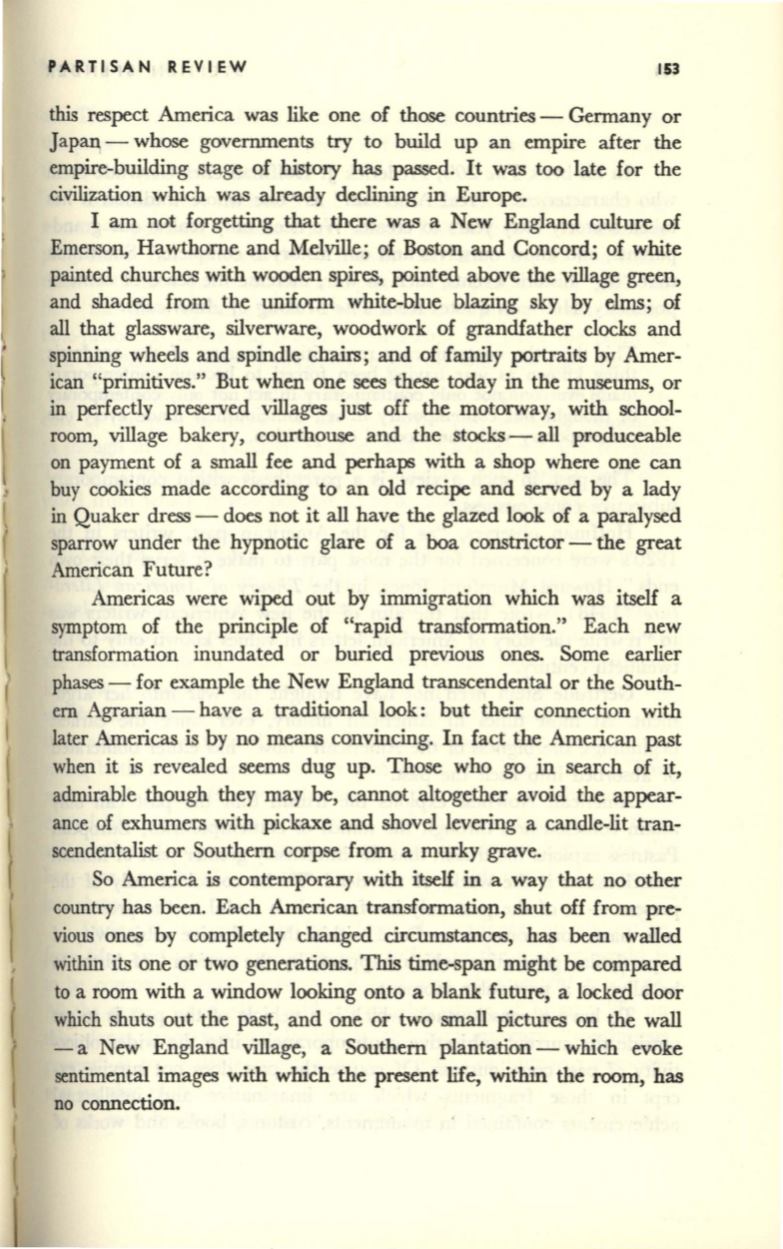
PARTISAN
REVIEW
153
this respect America was like one of those countries - Germany or
Japa~
- whose governments try to build up an empire after the
empire-building stage of history has passed.
It
was too late for the
civilization which was already declining
in
Europe.
I am not forgetting that there was a New England culture of
Emerson, Hawthorne and Melville; of Boston and Concord; of white
painted churches with wooden spires, pointed above the village green,
and shaded from the uniform white-blue blazing sky by elms; of
all that glassware, silverware, woodwork of grandfather clocks and
spinning wheels and spindle chairs; and of family portraits by Amer–
ican
"primitives." But when one sees these today
in
the museums, or
in perfectly preserved villages just off the motorway, with school–
room, village bakery, courthouse and the stocks - all produceable
on payment of a small fee and perhaps with a shop where one can
buy cookies made according to an old recipe and served by a lady
in
Quaker dress - does not it all have the glazed look of a paralysed
sparrow under the hypnotic glare of a boa constrictor - the great
American Future?
Americas were wiped out by immigration which was itself a
symptom of the principle of "rapid transformation." Each new
transformation inundated or buried previous ones. Some earlier
phases - for example the New England transcendental or the South–
ern Agrarian - have a traditional look: but their connection with
later Americas is by no means convincing. In fact the American past
when it
is
revealed seems dug up. Those who go in search of it,
admirable though they may be, cannot altogether avoid the appear–
ance of exhumers with pickaxe and shovel levering a candle-lit tran–
scendentalist or Southern corpse from a murky grave.
So America
is
contemporary with itself in a way that no other
country has been. Each American transformation, shut off from pre–
vious ones by completely changed circumstances, has been walled
within
its one or two generations.
This
time-span might be compared
to a room with a window looking onto a blank future, a locked door
which shuts out the past, and one or two small pictures on the wall
- a New England village, a Southern plantation - which evoke
sentimental images with which the present life, within the room, has
no connection.


